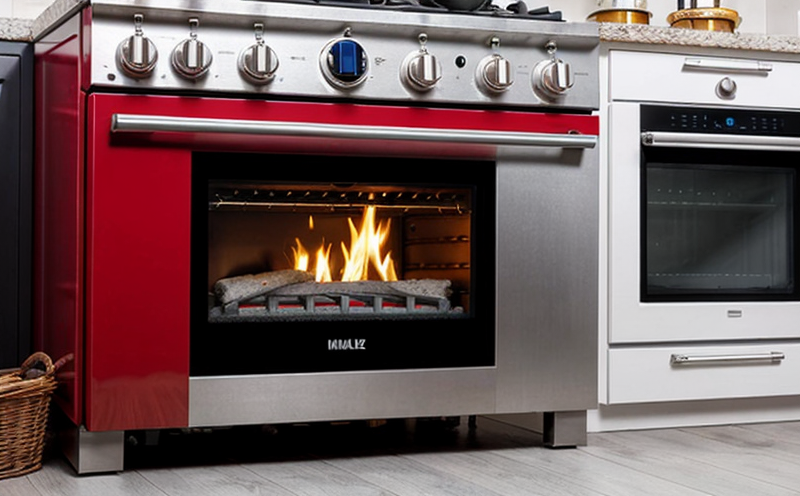Fire Safety Testing of Water Heaters
The fire safety testing of water heaters is a critical component in ensuring compliance with international standards such as ISO and ASTM, which are essential for the safe operation of household appliances. Fire safety tests are designed to evaluate the resistance of water heater components against ignition sources, heat exposure, and other environmental stresses that could potentially lead to fires.
Water heaters represent a significant risk in residential settings due to their proximity to flammable materials and the high temperatures at which they operate. A single malfunction or design flaw can escalate into a serious fire hazard, affecting not only the property but also the occupants' safety. Therefore, rigorous testing is paramount.
Testing procedures typically involve exposing water heater components to controlled flame impingement tests where the surface of the component is subjected to direct heat for extended periods. This helps simulate real-world conditions that might cause ignition. Other tests include immersion in water with specified temperatures and pressures to assess durability and integrity under operational conditions.
Specimen preparation involves selecting representative samples from batches or individual units, ensuring they are clean and free from any defects before testing begins. The test setup includes precise control over environmental factors such as temperature, humidity, and ventilation, which can influence the outcome of fire safety tests.
The instrumentation used in these tests is highly sophisticated, including thermal imaging cameras to monitor heat distribution across surfaces during ignition events. Additionally, sensors measure key parameters like peak temperatures reached by components under test conditions. These instruments provide detailed data that aids in understanding how different materials behave when exposed to fire hazards.
Reporting of results follows strict guidelines laid out by relevant standards bodies. Reports detail the testing procedures used, any deviations from standard protocols if necessary, and conclusions drawn based on observed behavior during tests. Compliance with these standards ensures consistent quality across all units produced by manufacturers.
The importance of fire safety testing cannot be overstated given its role in protecting lives and properties against accidental fires caused by malfunctioning water heaters. By adhering to stringent testing protocols, manufacturers can produce reliable products that meet regulatory requirements while enhancing overall product safety for end users.
Benefits
The benefits of conducting fire safety tests on water heaters are multifaceted:
- Promotes Safety: Ensures that every water heater meets stringent safety standards, reducing the risk of accidental fires.
- Increases Consumer Confidence: By demonstrating adherence to industry best practices, manufacturers build trust among consumers who value their family’s well-being above all else.
- Enhances Reputation: Positive outcomes from rigorous testing contribute significantly towards establishing a positive brand image and fostering long-term customer relationships.
- Meets Regulatory Requirements: Compliance with local regulations helps avoid legal issues related to product non-conformance or recalls post-sale.
Environmental and Sustainability Contributions
In addition to enhancing safety, fire safety testing of water heaters also plays a crucial role in promoting sustainability. Efficient appliances contribute less waste and lower energy consumption throughout their lifecycle, from manufacturing through use and disposal.
Testing ensures that the materials used are not only safe but also environmentally friendly. For instance, certain types of insulation or coatings applied during production undergo additional scrutiny to ensure they do not emit harmful substances into the environment over time.
Moreover, energy-efficient features built into modern water heaters contribute positively towards reducing carbon footprints by minimizing electricity usage required for heating water. This aligns well with global efforts aimed at mitigating climate change impacts through sustainable practices.
Competitive Advantage and Market Impact
- Differentiation: Adherence to rigorous fire safety testing sets a benchmark for quality that competitors may struggle to match, giving your brand an edge in competitive markets.
- Customer Loyalty: Satisfied customers are more likely to remain loyal and recommend your products to others, driving sustained growth through word-of-mouth marketing.
- New Market Opportunities: Meeting or exceeding regulatory standards opens doors for exporting your products internationally, where stringent quality control measures may be required by different countries.





